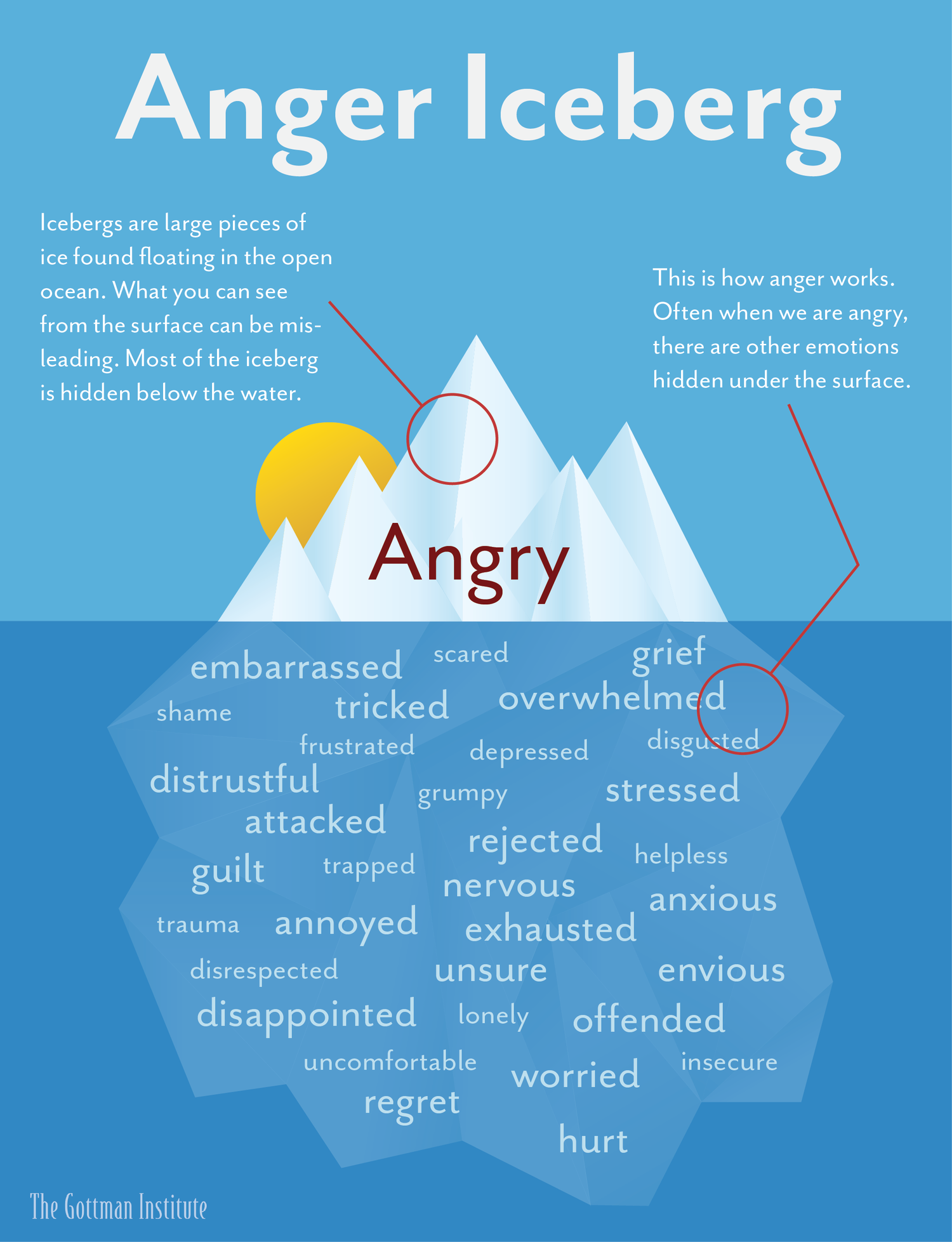Why Am I So Angry? Exploring What’s Beneath the Surface
Anger can be one of the most misunderstood emotions. If you find yourself feeling reactive, frustrated, or easily overwhelmed—and then later feel guilt or shame—you are not alone.
Many people struggle with anger not because they are "bad" or "broken," but because anger often signals something deeper happening inside. It deserves compassion and curiosity, not judgment.
Let’s explore anger a little more deeply.
Understanding Anger
Anger is a natural, protective emotion. It often surfaces when we feel threatened, misunderstood, powerless, or hurt. However, when anger feels too big or comes out in ways we don’t intend—like yelling, shutting down, or becoming irritable—it can leave us feeling confused and ashamed afterward.
You might wonder, "Why am I so angry? I don’t want to react this way." The truth is: anger usually isn't the first emotion—it’s just the most visible one.
The Anger Iceberg
Think of anger like an iceberg.
The part we see—outbursts, irritability, shutting down—is only the tip.
Beneath the surface often lie emotions like:
Hurt
Fear
Sadness
Guilt
Disappointment
Loneliness
Shame
When we don’t have the tools or space to process these underlying emotions, anger can become the quickest and loudest way our bodies try to protect us. Exploring what's beneath the anger can be a powerful part of healing.
Flipping Your Lid: When Your Brain Goes into Overdrive
Have you ever reacted in a way that surprised even yourself? This is what’s often called "flipping your lid." When we feel emotionally overwhelmed, the rational, problem-solving part of our brain (the prefrontal cortex) temporarily shuts down. The emotional brain (the amygdala) takes over, ready to fight, flee, or freeze.
Flipping your lid isn’t a character flaw—it’s a human brain doing its best to protect you under stress. Normalizing this can take away some of the shame and open the door to learning new ways to respond.
Understanding Your Window of Tolerance
The "window of tolerance" is a term used to describe the emotional zone where you can function and feel okay—where you can think clearly, manage feelings, and respond rather than react.
When you’re inside your window, challenges feel manageable.
When you’re outside it, you might either:
Hyperarousal: Feel overwhelmed, anxious, reactive, angry.
Hypoarousal: Feel numb, frozen, disconnected.
Recognizing when you’re starting to move out of your window is key to staying grounded.
How Therapy Can Help
Therapy isn’t about “fixing” you—it’s about helping you better understand your emotions, build emotional flexibility, and develop tools to stay in your window of tolerance. Together, we can explore the deeper roots of your anger with compassion, not criticism.
Therapy offers a space to:
1.Understand Your Anger Triggers
Many people experience anger without fully understanding where it’s coming from. Therapy helps you explore your unique triggers—whether it’s feeling disrespected, powerless, unheard, or overwhelmed. When you know your triggers, you can start to anticipate and respond rather than react automatically.
2.Identify the Emotions Beneath the Surface
Remember the anger iceberg? Therapy creates a safe space to gently uncover the feelings that live underneath anger—hurt, fear, sadness, loneliness, disappointment—and work through them with compassion. By healing what’s beneath the surface, you often find that anger loses much of its intensity.
3.Expand Your Window of Tolerance
Therapy supports you in building emotional resilience so you can stay grounded even when life feels challenging. Together, we can develop practical tools—like mindfulness, grounding exercises, and self-soothing skills—that help you stay within your window of tolerance more often.
4.Reframe Your Relationship with Anger
Rather than seeing anger as something to fear or suppress, therapy helps you view it as valuable information. You’ll learn how to recognize when anger is trying to protect you, and how to respond thoughtfully, setting boundaries or expressing yourself without regret.
5.Heal from Past Hurts
For many people, anger is rooted in past experiences—old wounds that never had the chance to fully heal. Therapy offers a space to process and release these hurts, allowing you to break free from old patterns and create new, healthier ways of being.
6.Practice New Coping Strategies in Real Time
In our sessions, you’ll have the opportunity to role-play difficult situations, practice new communication skills, and build confidence in managing emotions when they arise in daily life. It’s not about being perfect—it’s about having more options, more tools, and more self-trust.
The Benefits of Therapy for Anger Management
Choosing to explore your anger in therapy can lead to powerful outcomes, including:
Feeling more in control of your reactions
Improving relationships with family, friends, and coworkers
Reducing feelings of guilt and shame
Increasing self-confidence and emotional resilience
Developing a calmer, more connected relationship with yourself
Final Thoughts
You are not "too much." You are not "broken."
Anger is not the problem—it’s the messenger.
If you’re ready to understand it, heal it, and find a more peaceful way forward, I'm here to support you.
Ready to take the first step toward change? Reach out today to book a session and start creating a relationship with your emotions rooted in compassion, not shame.



